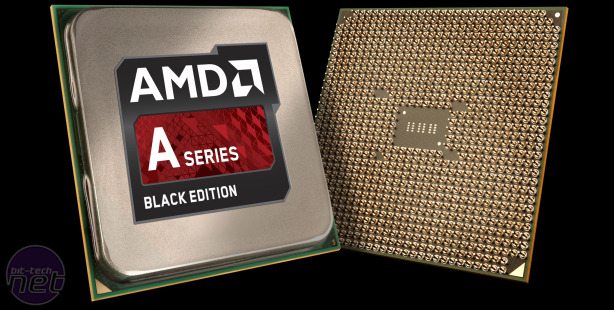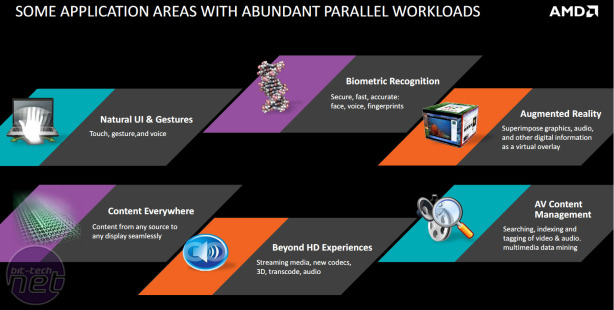
Conclusion
Judging the success of Kaveri is difficult for a number of reasons. For starters, AMD has yet to supply us with its faster A10 products, and when it comes to the A8-7600 it's not available yet and has no confirmed UK pricing. Nevertheless, there are still some conclusions that can be drawn from our testing.When it comes to onboard graphics, AMD's GCN architecture sees it again grabbing a decisive victory. In games and GPU accelerated workloads there's really very little competition from Intel at this price point. The CPU side of things is a little different, however. Certainly, Intel's latest generation of Core processors seem to hold a healthy advantage in traditional x86 and CPU-bound workloads, although it's maybe not quite as unanimous as it typically has been, with AMD's CPU improvements within Steamroller seeing it claim victory in WPrime, for example.
However, it's precisely this notion of treating the CPU and GPU as separate entities that AMD wants us to move away from. Given the graphics hardware it has readily available to it, it's easy to see why it wants to focus on heterogeneous computing and parallel processing solutions to existing and upcoming areas of application.
Looking at AMD's vocal support for and implementation of HSA and OpenCL 2.0 in Kaveri alongside features such as TrueAudio and Mantle, there are, rather appropriately, parallels that can be drawn. In one way or another, said features are designed to better allow developers to utilise specific processing elements for the workloads they're most suited for and to thus make the most of the resources on hand. Each of them also lays a foundation of sorts for developers to work with – as of yet, neither TrueAudio nor Mantle have been utilised in a retail product, and HSA optimisations are only just beginning to trickle into a small handful of applications. These foundations are of course necessary, as developers aren't going to write code for non-existent hardware, but it does mean that the ecosystem AMD is attempting to build is still very much in its infancy.
With that in mind, we have to say we're impressed by AMD's commitment to this line of thinking, and we think it makes sense too. Heterogeneous computing is already everywhere, and HSA seems like a logical step for the APU market where performance per watt per dollar is crucial, particularly in the notebook and portable segments.
As far as recommendations go, we really want to see what the A10 parts are capable of before making a final judgement, as it's possible that you could net yourself a fair bit more performance for a minor additional investment. That said, the A8-7600 certainly has a number of things going for it. It may not dominate across the board, but its performance is favourable compared to higher TDP Richland parts. Its lower and customisable TDP also makes it especially suited to media/HTPC builds, as it will allow users to keep noise, temperature and size lower than the A10 parts, which will be better suited for casual gaming systems. If you're going to be adding a discrete GPU of any real merit, we'd say an Intel Haswell Core-i3 processor is still the safest bet unless you're already fully convinced about AMD's approach to heterogeneous computing.
Finally, while the incompatibility of existing FM2 boards with Kaveri may irk existing Trinity and Richland owners, it was likely unavoidable. Any who do wish to make the jump, however, can at least buy an FM2+ motherboard first and perhaps wait for prices of the Kaveri APUs to fall.
-
Speed34 / 50
-
Features14 / 15
-
Value30 / 35


MSI MPG Velox 100R Chassis Review
October 14 2021 | 15:04










Want to comment? Please log in.